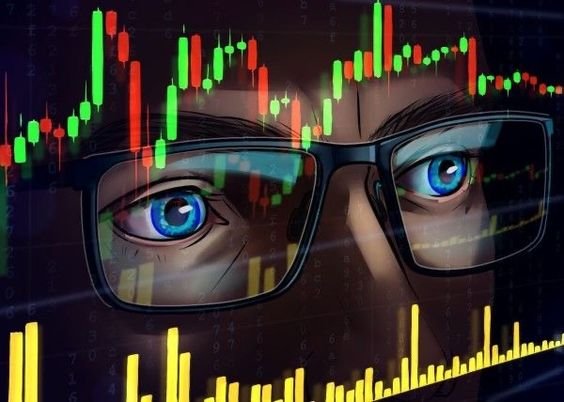The cryptocurrency industry, often lauded for its innovative approach to finance and investment, has not been without its share of controversies. Among the most dramatic in recent history is the collapse of Terraform Labs’ Terra (LUNA) and its stablecoin TerraUSD (UST), orchestrated by founder Do Kwon.
This incident not only wiped out billions of dollars in market value but also shook investor confidence in the stability and viability of cryptocurrency projects, particularly stablecoins.
This detailed article explores the intricacies of the Terra fraud scandal, the role of Do Kwon, and its implications for the cryptocurrency market.
Background of Terraform Labs and Do Kwon
Founded by Do Kwon and Daniel Shin in January 2018, Terraform Labs aimed to revolutionize the digital finance arena through its blockchain platform, Terra. The platform featured two main cryptocurrencies:
Terra (LUNA) and TerraUSD (UST). LUNA was the native token, while UST was a stablecoin pegged to the US dollar through an algorithmic formula that relied on burning and minting LUNA to maintain its peg.
The Rise of Terra
Terra quickly gained popularity, particularly in Asian markets, for its ambitious vision to combine the price stability of fiat currencies with the censorship resistance of Bitcoin.
The ecosystem saw a variety of applications built on it, from payment systems to savings protocols like Anchor, which promised high returns on UST deposits.
The Collapse
The Mechanics Behind the Fall
In May 2022, the seemingly stable ecosystem of Terra began to show cracks as the peg of UST to the dollar started to falter. The design of UST required that for every UST to remain pegged at $1, an equivalent value of LUNA had to be burned.
When UST’s value began to drop below the dollar, the protocol automatically increased the supply of LUNA to buy back and burn UST, aiming to reduce the supply and restore the peg. However, this led to hyperinflation of LUNA, eroding trust and leading to a death spiral.
The more UST fell, the more LUNA was printed, and the less faith investors had in both currencies, leading to a catastrophic loss in value.
The Impact
The rapid devaluation led to a panic sell-off, causing both LUNA and UST to crash nearly to zero. This eroded about $40 billion of market value almost overnight and left many retail investors with devastating losses.
The fallout affected the broader crypto market as well, leading to intensified calls for regulation and oversight within the industry.
Do Kwon’s Role and Legal Implications
Central Figure
Do Kwon was the central figure in the Terra saga, serving as the CEO of Terraform Labs. His aggressive marketing strategies and bold promises were key in driving the adoption of Terra and UST.
However, his same overconfidence and dismissive attitude towards critics came under intense scrutiny following the collapse.
Legal Troubles
Following the crash, investors and regulators across the globe started to take action. South Korean authorities began investigating Kwon and Terraform Labs for potential fraud and financial regulation violations.
Several investors filed lawsuits, accusing Kwon and his company of misleading the public and mismanaging the crypto assets under their control.
Reactions and Responses
Community Outcry
The Terra community and the broader cryptocurrency world reacted with a mix of shock, anger, and disbelief. Many small investors who had invested their life savings into the Terra ecosystem were left financially devastated.
The scandal sparked a widespread discussion about the ethics of unregulated financial products and the responsibilities of founders and developers in the crypto space.
Regulatory Scrutiny
The Terra collapse prompted regulators around the world to consider stricter regulations for cryptocurrencies, especially stablecoins.
The event highlighted the risks associated with algorithmic stablecoins and the need for more transparent and robust financial practices in the crypto industry.
Implications for the Crypto Industry
Trust and Credibility
The Terra scandal significantly dented the credibility of the cryptocurrency industry, especially concerning the stability and safety of stablecoins.
It raised serious questions about the viability of algorithmic stablecoins and the oversight necessary to prevent similar incidents.
Calls for Regulation
There has been a heightened call for regulatory frameworks to govern the creation and management of digital currencies.
Lawmakers in various countries, including the United States, have been pushing for legislation that would provide clearer guidelines and stricter oversight for the crypto industry.
Market Volatility
The incident contributed to increased market volatility, with ripple effects felt across various cryptocurrencies. It underscored the interconnectedness of the crypto market and the potential for systemic risk posed by the failure of a single but significant player like Terra.
The story of Do Kwon and the Terra scandal serves as a stark reminder of the risks inherent in the cryptocurrency market, particularly in projects that promise high returns with supposedly minimal risk.
It illustrates the need for greater due diligence from investors, more accountability from project founders, and comprehensive regulatory frameworks to safeguard the interests of all market participants.
As the industry continues to evolve, the lessons learned from the Terra debacle will likely shape its path towards greater maturity and stability.
This painful episode highlights the critical balance between innovation and regulation, a balance that must be carefully managed to harness the benefits of cryptocurrencies while mitigating their risks.




